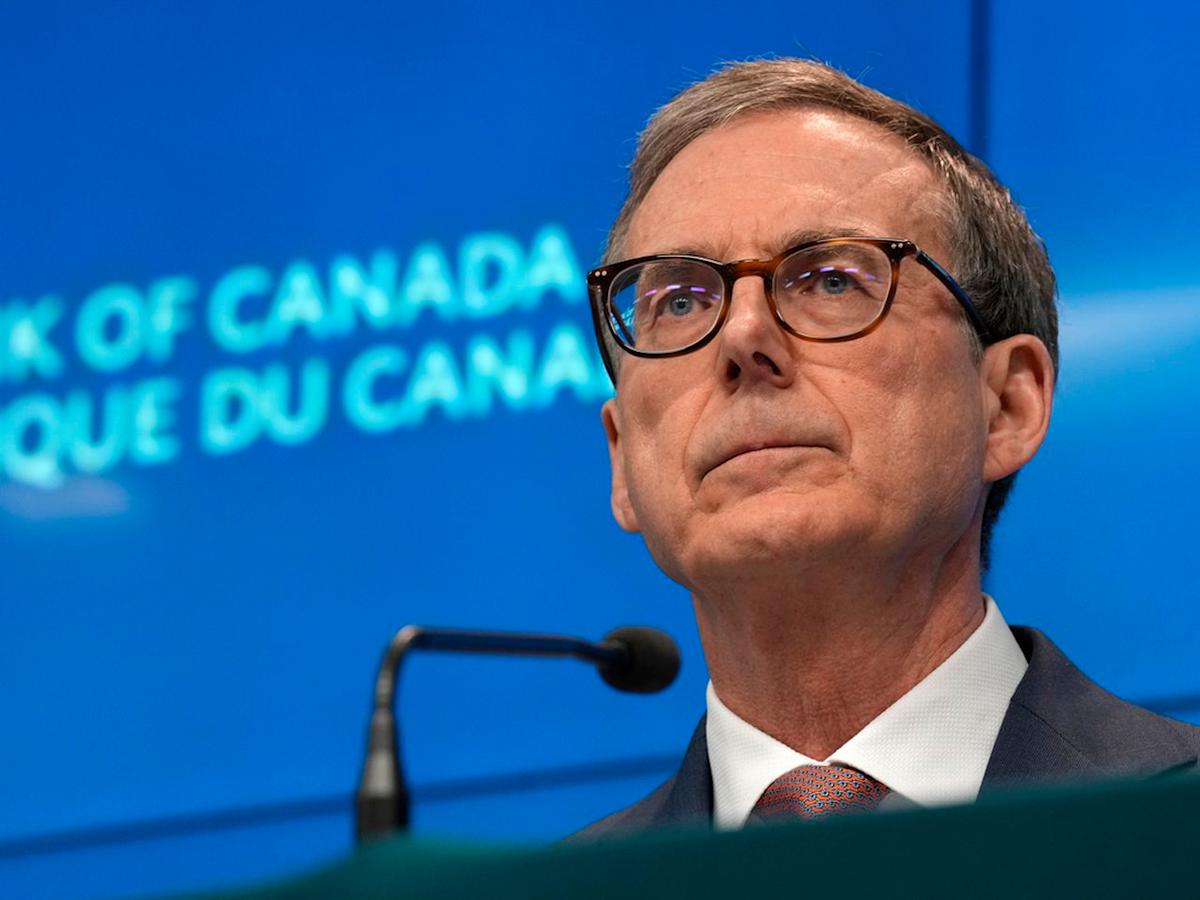Bank of Canada governor Tiff Macklem during a news conference in Ottawa on June 4. (Credit: Adrian Wyld/THE CANADIAN PRESS files)
The Bank of Canada is expected to hold its policy rate at 2.75 per cent for the third straight time on Wednesday, as core inflation has edged higher in the last few months and the worst-case economic scenarios are less likely.
“I think we and 99 per cent of the rest of the world are expecting no change from the Bank of Canada,” said Bank of Montreal chief economist Douglas Porter. “The bank seems very comfortable keeping rates right at the mid-point of what they consider neutral, and I don’t think there is too much debate on what the bank is going to do.”
Market bets have the likelihood of a hold on Wednesday at more than 90 per cent, as underlying inflation remains sticky. Core inflation sits around three per cent, with some tariff-related impacts showing up in clothing and auto prices.
Recent survey data released by the Bank of Canada had some businesses showing hesitancy in passing tariff-related input costs onto consumers, and instead opting to reduce their margins to keep market share.
Still, Desjardins Group chief economist Jimmy Jean said he expects the central bank will remain vigilant.
“I think from a prudence perspective, a risk management perspective, they’re still going to be on alert for the possibility that it’s just sort of a delayed situation and that we see more pass-through and more impact on consumer prices,” said Jean.
The central bank will also cite the resilience of Canada’s labour market in its decision to hold rates. The unemployment rate came in at 6.9 per cent in June, down from seven per cent in May, with the Canadian economy adding 83,000 jobs, albeit mostly part-time.
Porter said June’s robust jobs report is the single most surprising economic statistic in Canada over the last four months.
“Anytime you have a pullback in the unemployment rate, that is good news, full stop. That does not happen in a recession,” said Porter. “What that is suggesting is that while there are certain industries that are really hit hard by this, the broader economy is managing through it.”
The Bank of Canada has not provided a forecast this year, instead opting to provide scenarios for how the trade war might impact economic growth.
In the first scenario, a trade deal occurs and tariffs are lifted, but growth stalls in the second quarter and then averages 1.6 per cent through the end of 2027. In the second scenario, which assumes a protracted trade war, GDP contracts for four quarters, averaging about minus 1.2 per cent.
“I think one point of interest will be if they issue a forecast again and what that forecast will look like,” said Jean.
Story continues
